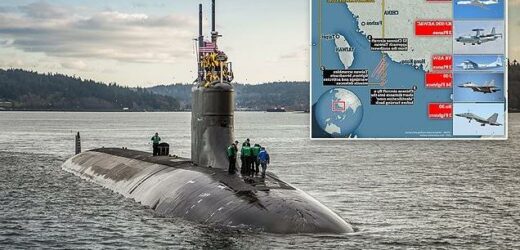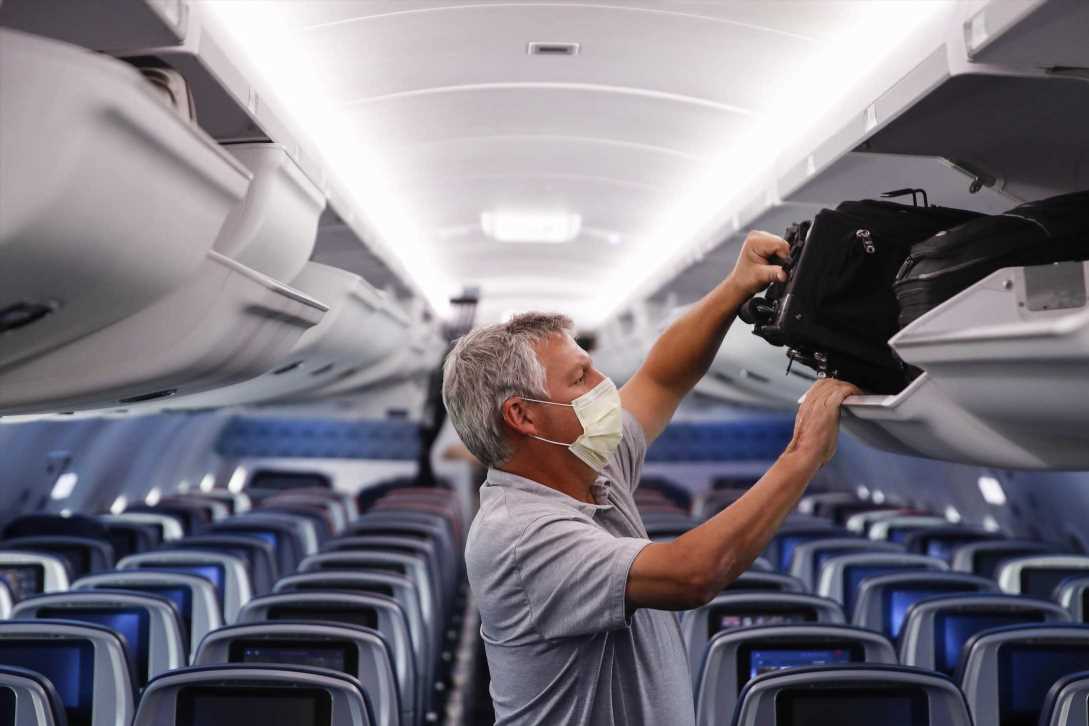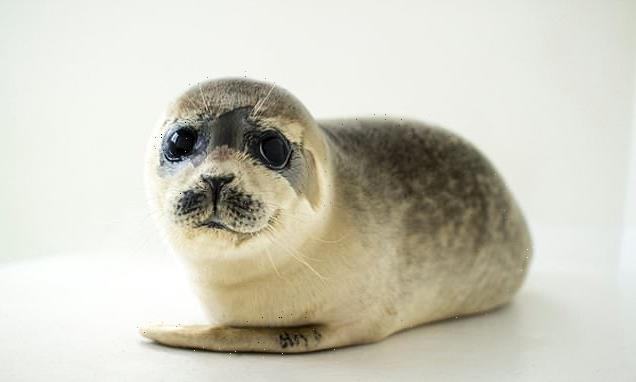Nuclear-powered attack submarine USS Connecticut struck ‘uncharted sea mount’ in South China Sea, injuring 11 of its crew last month, US Navy investigation finds
- On the day of the accident there had been soaring tensions with China
- But the Navy has determined that there was no foul play in the incident
- USS Connecticut struck a sea mount, a mountain which rises from the sea bed
- Navy remains on high alert in the South China Sea amid threats from Beijing
A US nuclear submarine struck an ‘uncharted sea mount’ in the South China Sea, injuring 11 of its crew last month, a Navy investigation has revealed.
On the day the USS Connecticut struck the underwater mountain there were soaring tensions with China after 39 warplanes breached Taiwanese airspace.
A record 56 aircraft flew into the zone two days later in a 24-hour period.
But the 7th Fleet, which operates in the western Pacific, determined after an investigation that there had been no foul play in the incident, concluding that the Connecticut smashed into a mountain rising from the sea bed on October 2.
‘The investigation determined USS Connecticut grounded on an uncharted seamount while operating in international waters in the Indo-Pacific region,’ a spokesman said.
The Navy remains on high alert in the South China Sea where Beijing continues to make threats and lays claim to disputed islands, valued for their strategic and historic significance.
The 7th Fleet, which operates in the western Pacific, said an investigation had concluded that the Connecticut (pictured in Puget Sound, Washington, in 2016) smashed into a geological formation and not another vessel on October 2.
On the day the USS Connecticut struck the underwater mountain there were soaring tensions with China after 39 warplanes breached Taiwanese airspace. A record 56 aircraft flew into the zone two days later in a 24-hour period
The Navy confirmed the incident a week after it took place, only saying that the Connecticut, a nuclear-powered fast-attack submarine, ‘struck an object while submerged.’
But Beijing on Tuesday accused Washington of failing to provide timely and detailed information on the incident, complaining of a ‘lack of transparency and lack of responsibility from the US.’
Foreign ministry spokesman Wang Wenbin said China urges the US to provide an explanation of the vessel’s ‘navigational intentions, the specific location of the accident, whether it was in the exclusive economic zone or territorial waters of any country, and whether it caused any nuclear leak or damage to the ocean environment.’
Washington should ‘stop sending warships and military aircraft to provoke trouble and make shows of force,’ Wang said, warning that ‘this type of accident will only become more frequent’ without any change in US actions.
The 7th Fleet said there would be further deliberation on ‘whether follow-on actions, including accountability, are appropriate.’
USNI News, published by the US Naval Institute, a thinktank close to the Navy, reported that there were some moderate and minor injuries in the accident.
It said the crash damaged the sub’s forward ballast tanks and forced it to sail on the surface for a week back to Guam for repairs.
The ship’s nuclear plant was not damaged, the publication said.
The 353-foot vessel was commissioned in 1998 and sails with a crew of 116, including 15 officers.
It can carry 40 torpedoes or missiles.
The South China Sea remains a central sphere of influence for America and its allies as China seeks to dominate its smaller neighbors and wrest control of the strategic islands and reefs which dot the region.
And last month, as tensions escalated over the flying of warplanes into Taiwan, it emerged that China had tested a new hypersonic nuclear-capable missile, taking world powers by surprise with a fearsome technology capable of striking virtually anywhere on the planet.
Weapons race: A comparison of the most advanced (columns from left) missiles, aircraft carriers, tanks and aircraft possessed by China, the US and Russia
Counterbalancing the threat posed by China is the new Aukus alliance forged by the US, UK and Australia last month.
That new security pact has further heightened tensions in the South China Sea where many of the smaller countries, such as Vietnam and the Philippines, look to the US for military support.
China’s President Xi Jinping has previously stated that Taiwan, a self-governing democracy, will inevitably become subsumed as part of China.
Taiwan’s government has made frequent, recent appeals to Washington and the West not to dismiss Beijing’s threats as pure bombast.
As part of the West’s show of strength, a fleet of US, UK and Australian vessels have been charting the world, travelling to the Far East and back.
Led by HMS Queen Elizabeth, the Royal Navy’s new aircraft carrier, the fleet has since returned from the South China Sea and travelled to the Gulf via the Bay of Bengal.
The Gulf is the UK Carrier Strike Group’s final destination before it returns to Portsmouth on the south coast of England.
Source: Read Full Article





